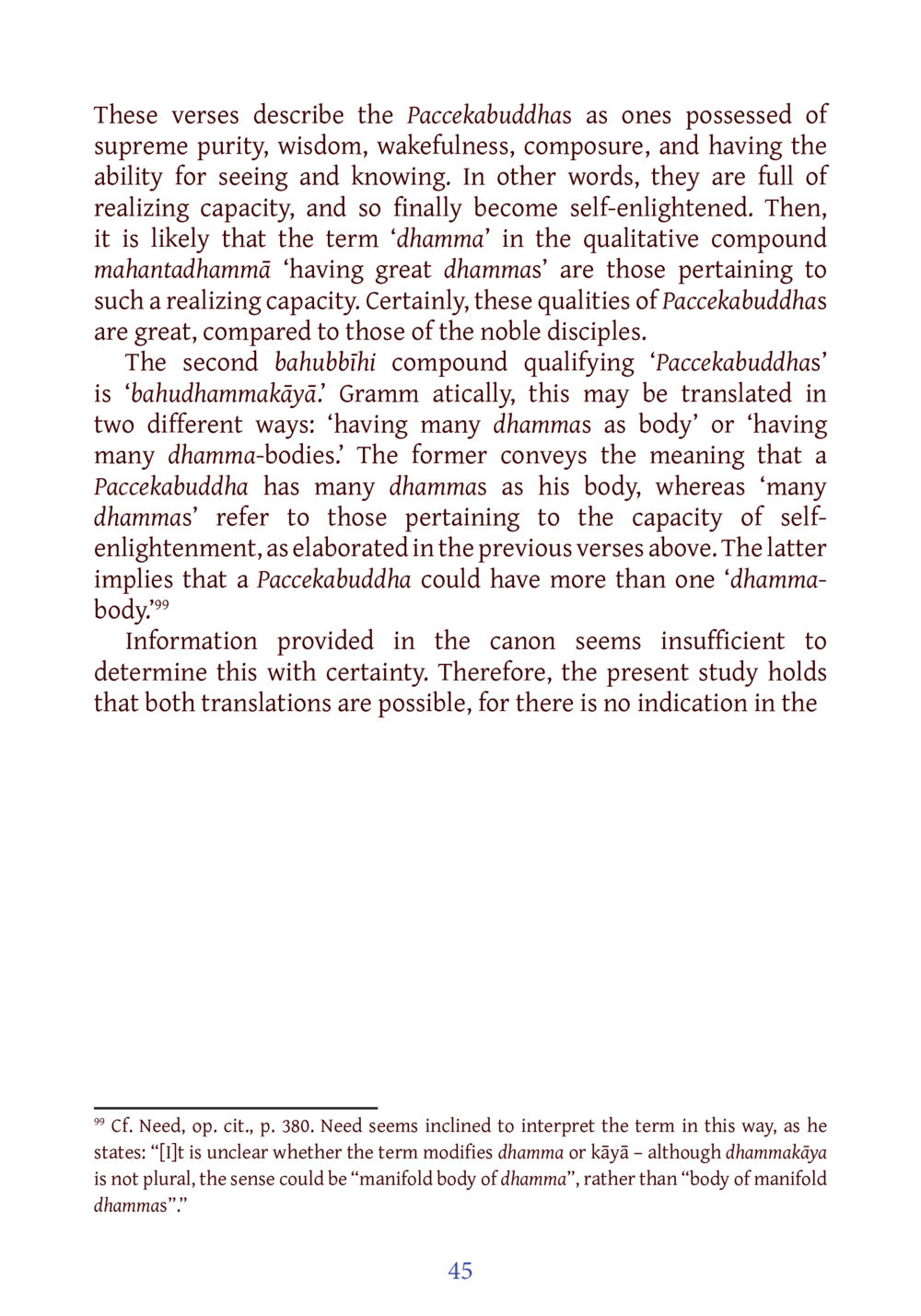Understanding Paccekabuddhas: Characteristics and Dhamma : หน้า 66/141
DIRI Journal : หน้า 66/141 Explore the supreme qualities of Paccekabuddhas, including purity, wisdom, and self-enlightenment through dhamma.
2 ครั้ง

สรุปเนื้อหา
These verses highlight the qualities of Paccekabuddhas, emphasizing their supreme purity, wisdom, and self-enlightenment capacity. The term ‘mahatadhamma’ refers to the great dhammas that relate to this realizing capacity. Additionally, ‘bahudhammakāyā’ can be interpreted as either having many dhammas as body or multiple dhamma-bodies, indicating the depth of their enlightened nature. Information in the canon lacks clarity, but both interpretations of the compound are valid.
หัวข้อประเด็น
-Paccekabuddhas
-Qualities of Paccekabuddhas
-Dhamma and self-enlightenment
-Interpretations of bahudhammakāyā
-Buddhist teachings
ข้อความต้นฉบับในหน้า
These verses describe the Paccekabuddhas as ones possessed of supreme purity, wisdom, wakefulness, composure, and having the ability for seeing and knowing. In other words, they are full of realizing capacity, and so finally become self-enlightened. Then, it is likely that the term ‘dhamma’ in the qualitative compound mahatadhamma ‘having great dhammas’ are those pertaining to such a realizing capacity. Certainly, these qualities of Paccekabuddhas are great, compared to those of the noble disciples.
The second bahubbhi compound qualifying ‘Paccekabuddhas’ is ‘bahudhammakāyā’. Grammatically, this may be translated in two different ways: ‘having many dhammas as body’ or ‘having many dhamma-bodies.’ The former conveys the meaning that a Paccekabuddha has many dhammas as his body, whereas ‘many dhammas’ refer to those pertaining to the capacity of self-enlightenment, as elaborated in the previous verses above. The latter implies that a Paccekabuddha could have more than one dhamma-body.
99
Information provided in the canon seems insufficient to determine this with certainty. Therefore, the present study holds that both translations are possible, for there is no indication in the
หน้าหนังสือทั้งหมด

1

2

3

4

5

6

7

8

9

10

11

12

13

14

15

16

17

18

19

20

21

22

23

24

25

26

27

28

29

30

31

32

33

34

35

36

37

38

39

40

41

42

43

44

45

46

47

48

49

50

51

52

53

54

55

56

57

58

59

60

61

62

63

64

65

66

67

68

69

70

71

72

73

74

75

76

77

78

79

80

81

82

83

84

85

86

87

88

89

90

91

92

93

94

95

96

97

98

99

100

101

102

103

104

105

106

107

108

109

110

111

112

113

114

115

116

117

118

119

120

121

122

123

124

125

126

127

128

129

130

131

132

133

134

135

136

137

138

139

140

141
หนังสือที่เกี่ยวข้อง
Load More
